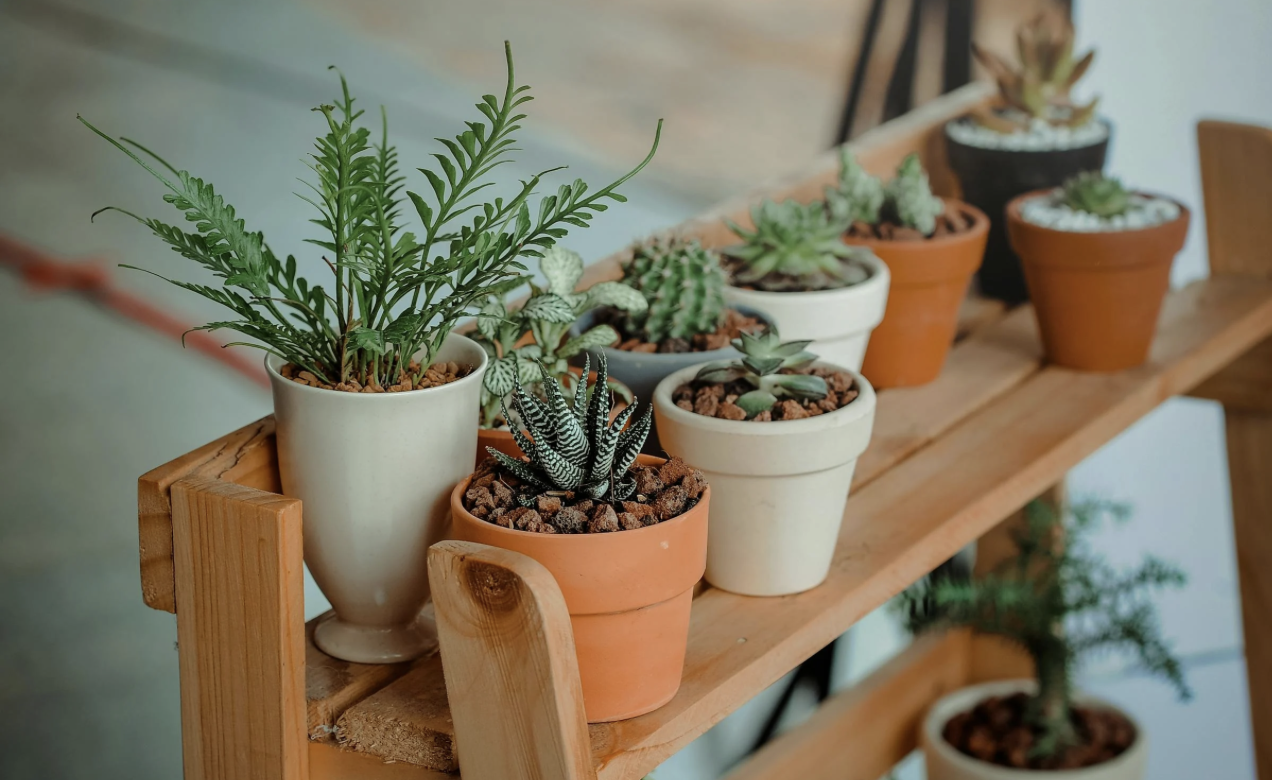
In today’s world, sustainability is more important than ever. As climate change accelerates and natural resources dwindle, making small but impactful changes in our daily lives can help reduce our environmental footprint. One of the best places to start is at home. A sustainable home not only helps the environment but also saves money in the long run by cutting down on energy and water bills. Whether you’re building a new home, renovating, or simply looking for ways to make your living space greener, this guide will help you create a more eco-friendly home.
1. Energy Efficiency: Reduce Consumption and Go Renewable
 One of the biggest ways to make your home more sustainable is by reducing energy consumption and using renewable sources when possible.
One of the biggest ways to make your home more sustainable is by reducing energy consumption and using renewable sources when possible.
- Switch to LED Bulbs: LED bulbs use up to 80% less energy than traditional incandescent bulbs and last much longer, making them an easy and effective way to save energy.
- Use Energy-Efficient Appliances: When shopping for new appliances, look for the ENERGY STAR label, which indicates that the product meets energy efficiency guidelines set by the U.S. Environmental Protection Agency.
- Unplug Electronics: Even when turned off, devices like TVs, microwaves, and phone chargers still consume power. Unplugging them when not in use or using a smart power strip can help cut down on wasted energy.
- Install a Smart Thermostat: A smart thermostat can learn your schedule and adjust the temperature accordingly, helping to reduce energy consumption and lower your utility bills.
- Consider Solar Panels: If feasible, installing solar panels can significantly cut down your reliance on fossil fuels and reduce electricity bills in the long run.
2. Water Conservation: Every Drop Counts
 Water is one of our most precious resources, and conserving it is essential for a sustainable home.
Water is one of our most precious resources, and conserving it is essential for a sustainable home.
- Fix Leaks: A single leaky faucet can waste thousands of gallons of water each year. Regularly check for and repair any leaks in your home.
- Install Low-Flow Fixtures: Low-flow showerheads, faucets, and toilets use less water without compromising performance, helping to save water and reduce bills.
- Harvest Rainwater: Collecting rainwater in barrels can provide free water for outdoor irrigation and other non-potable uses.
- Use Native Plants in Landscaping: Native plants require less water and maintenance compared to non-native species, reducing the need for excessive watering.
- Only Run Full Loads: Whether it’s your dishwasher or washing machine, always run full loads to maximize efficiency and reduce water usage.
3. Waste Reduction: Minimize, Reuse, and Recycle
 Reducing waste is crucial in making your home more sustainable.
Reducing waste is crucial in making your home more sustainable.
- Compost Organic Waste: Instead of sending food scraps and yard waste to the landfill, start a compost bin to create nutrient-rich soil for your garden.
- Reduce Single-Use Plastics: Switch to reusable grocery bags, stainless steel water bottles, and glass or metal straws to cut down on plastic waste.
- Buy in Bulk: Purchasing food and household goods in bulk reduces packaging waste and can save money.
- Recycle Properly: Make sure you’re recycling correctly by separating materials and checking your local recycling guidelines.
- Donate or Repurpose Unused Items: Instead of throwing away old clothes, furniture, or electronics, donate them to charity or find ways to repurpose them.
4. Eco-Friendly Materials: Choose Sustainable and Non-Toxic Options
 The materials used in your home can significantly impact sustainability and indoor air quality.
The materials used in your home can significantly impact sustainability and indoor air quality.
- Opt for Sustainable Flooring: Bamboo, reclaimed wood, and cork are eco-friendly flooring options that are durable and sustainable.
- Use Low-VOC Paints: Traditional paints contain volatile organic compounds (VOCs) that release harmful chemicals into the air. Choosing low-VOC or VOC-free paints can improve indoor air quality.
- Choose Recycled or Upcycled Furniture: Look for furniture made from reclaimed wood or other sustainable materials instead of buying brand-new items.
- Install Energy-Efficient Windows: Double-glazed or triple-glazed windows improve insulation, reducing the need for excessive heating or cooling.
- Use Natural Fiber Textiles: Organic cotton, wool, linen, and hemp are sustainable options for bedding, curtains, and upholstery.
5. Sustainable Heating and Cooling: Stay Comfortable While Reducing Impact
 Heating and cooling account for a significant portion of home energy use. Here’s how to minimize their impact:
Heating and cooling account for a significant portion of home energy use. Here’s how to minimize their impact:
- Improve Insulation: Proper insulation in walls, attics, and basements helps maintain indoor temperatures, reducing the need for excessive heating or cooling.
- Use Ceiling Fans: Ceiling fans help circulate air, reducing the need for air conditioning in summer and distributing heat more effectively in winter.
- Install a Programmable Thermostat: Adjust your home’s temperature based on when you’re there, saving energy without sacrificing comfort.
- Use Heavy Curtains or Blinds: Thick curtains help retain heat in winter and block out excess heat in summer, reducing energy consumption.
- Embrace Passive Solar Design: If you’re building or renovating, consider designing your home to maximize natural light and heat, reducing reliance on artificial lighting and heating.
6. Indoor Plants: Improve Air Quality Naturally
 Houseplants do more than just look beautiful—they help purify the air and create a healthier indoor environment.
Houseplants do more than just look beautiful—they help purify the air and create a healthier indoor environment.
- Air-Purifying Plants: Certain plants, such as spider plants, peace lilies, and snake plants, help remove toxins from the air.
- Grow Your Own Herbs: Fresh herbs like basil, mint, and rosemary can be grown indoors, reducing the need for store-bought herbs packaged in plastic.
- Reduce Carbon Dioxide Levels: Plants absorb CO2 and release oxygen, improving air quality naturally.
7. Sustainable Home Decor: Stylish and Green Choices
 Making conscious decor choices can help make your home both beautiful and sustainable.
Making conscious decor choices can help make your home both beautiful and sustainable.
- Buy Second-Hand or Vintage: Shopping at thrift stores or flea markets for furniture and decor reduces demand for new manufacturing.
- Choose Eco-Friendly Candles: Traditional paraffin candles release harmful chemicals. Opt for soy, beeswax, or coconut wax alternatives instead.
- Use Non-Toxic Cleaning Products: Many commercial cleaners contain harsh chemicals that can pollute the air and water. Use natural alternatives like vinegar, baking soda, and lemon juice.
- Support Local Artisans: Purchasing handmade, locally sourced decor items reduces the carbon footprint associated with mass production and shipping.
8. Grow Your Own Food: A Step Toward Self-Sufficiency
 Growing your own food not only reduces your carbon footprint but also ensures that you have fresh, chemical-free produce.
Growing your own food not only reduces your carbon footprint but also ensures that you have fresh, chemical-free produce.
- Start a Vegetable Garden: Even a small garden or a few potted plants on a balcony can provide fresh produce.
- Plant Fruit Trees: If you have space, growing fruit trees can be a great way to produce your own food.
- Use Organic Gardening Methods: Avoid synthetic pesticides and fertilizers, opting instead for organic and natural alternatives.
- Set Up a Beehive or Chicken Coop: If local regulations allow, keeping bees or chickens can provide fresh honey or eggs while supporting biodiversity.
Conclusion: Every Small Change Adds Up

Making your home more sustainable doesn’t require drastic changes all at once. Start small by incorporating a few of these tips and gradually work your way toward a more eco-friendly lifestyle. Not only will you reduce your environmental impact, but you’ll also create a healthier, more cost-effective, and energy-efficient home.
By making conscious choices, we can all contribute to a greener future—one home at a time.




